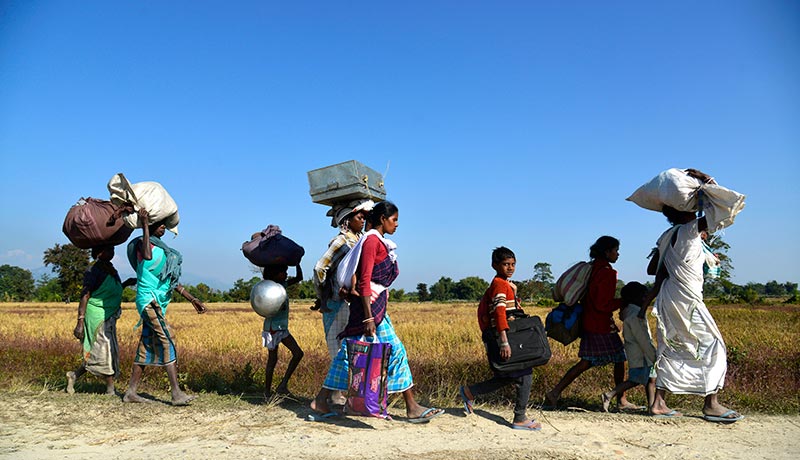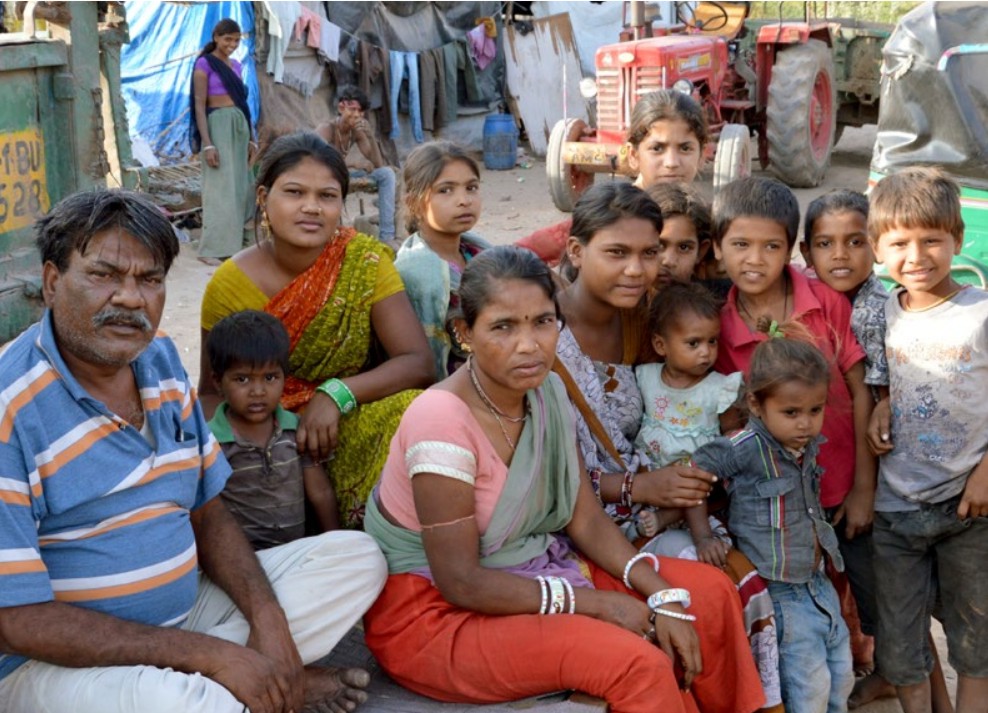
Of the 40.8 million people internally displaced by conflict and violence worldwide, by end 2015, a significant section is from India. During the year, conflict, violence and disasters caused 27.8 million new incidents of internal displacement in 127 countries. More than 19.2 million were triggered by rapid onset natural hazards in 113 countries and 8.6 million by conflict and violence in 28 countries. So called business ventures and development projects are also major causes.
These are the findings of a well researched report, Pushed Aside: Displaced for Development released yesterday, July 2016. The report has been brought out by the Internal Displacement Monitoring Centre (IDMC) and Norwegian Refugee Council
The report examines nine cases of displacement caused by development in the states of Gujarat, Jharkhand, Kerala and the national capital territory of Delhi. They reveal failed regulation, inadequate enforcement and harm to communities that extend to other cases elsewhere in India. They show that land acquisitions have pushed people aside with no regard for their rights or needs for decades. They are the result of government indifference and a failure to monitor the human rights impacts of projects and establish accountability mechanisms to address them.
Key Findings
One. Government power over land and its severe approach to dissent are key factors in enabling and perpetuating displacement in the context of development projects. Land acquisitions are facilitated by the exploitation of “public interest” to justify project approval, the use of “special economic zones” to circumvent legal safeguards, inaccurate land categorisation, prejudice against the poor and working classes, and lack of transparency. With international evictions standards not adhered to, indigenous peoples’ rights are not respected, and those affected face a power imbalance when trying to assert their rights.
Two. The authorities’ indifference to – and neglect of – the adverse human and socio-economic impacts on the displaced and society at large lead to a fall in living standards and fractured social networks. IDPs’ access to livelihoods becomes more difficult after eviction and income levels, food security, health and education suffer as a result. Housing conditions deteriorate because compensation, resettlement assistance and rehabilitation support are insufficient or not provided. Women and indigenous peoples tend to suffer the adverse effects of displacement disproportionately.
Three Data on the patterns of IDPs’ movement and their progress towards durable solutions is inadequate, leading to underestimates of the scale and consequences of displacement. Patterns of movement are not documented because nationwide data on the number, location and needs of those displaced is not publicly available, whether they are resettled or not. In many cases however, displacement tends to become protracted and durable solutions are rare. The case studies for this report contribute to the global evidence base on displacement caused by development. The detrimental impacts of development projects in India highlight the need to address the issue in key policy agendas and discussions. Despite IDPs’ awareness of their rights and resistance to their eviction and displacement, they will not escape poverty without significant external support and systemic changes to social and economic policies. The findings of the case studies can help to inform the implementation of new and upcoming UN frameworks on sustainable development at the national and local level, such as the 2030 Agenda for Sustainable Development and the New Urban Agenda. Both agendas commit to “leave no one behind” and explicitly include IDPs. They could also be used to inform the creation and revision of corporate and financial institutions’ policies on displacement and resettlement, and the work of UN mandate holders, treaty body committees and agencies. Global development agendas should ensure that while development projects may alleviate poverty for some, they should not at the same time create new poor or heighten the existing economic vulnerabilities of those evicted. Neglecting those evicted and displaced would undermine the achievement of global development goals. The timescale for planning and implementing projects provides ample opportunity to avoid or minimise displacement, and to put measures in place to ensure that those who are displaced achieve durable solutions.
By providing a first-hand account of development projects and business activities that have caused displacement across India, this report documents and analyses the scale, process and impacts of this phenomenon. It contributes to the existing body of evidence on this type of displacement and aims to raise awareness among policy-makers, business elites, academics, NGOs and operational decision-makers at the national and international level.
The report can be read here
This report was researched and written by Nadine Walicki and Marita Swain. Others involved in the process include Miloon Kothari (MIT DRAN), Shivani Chaudhry (HLRN), Balaji Pandey (ISED), Bhudev Bhakat (SBMS), Sejal Patel (CEPT), Indu K (CDS), S Irudaya Rajan (CDS), Persis Ginwalla, Madhuresh (NAPM) and Hari Mohan Mathur (CSD). Thanks to Jeremy Lennard for editorial assistance. Cover photo: Families still awaiting permanent resettlement since their eviction more than eight years ago from the Sabarmati Riverfront Development Project in Ahmedabad, Gujarat. The Ganeshnagar interim resettlement site has an estimated 7,500 residents living next to the city waste collection area and under high tension power lines. Credit: IDMC/Marita Swain, March 2016
2 The impacts on the lives of people driven from their homes or land by such ventures can be just as severe in terms of scope and duration as those experienced by people displaced by conflict, violence and disasters. These internally displaced people (IDPs) suffer a range of human rights violations, including their rights to adequate housing, land, food, water, health, education and freedom of movement. Displacement caused by development projects tends to affect the poorest and most marginalised groups, and – paradoxically – makes inequality worse rather than better.3 It also causes tensions that in some cases have fuelled violent conflict, and with it further displacement. In its efforts to paint a comprehensive global picture of the nature and scope of internal displacement, in 2015 IDMC institutionalised its work on that caused by development and business activities. The issue was introduced in IDMC’s 2016 Global Report on Internal Displacement as a trigger in need of specific attention. IDMC has gathered information on it since the organisation was founded in 1998, but this report represents IDMC’s first formal attempt to investigate, conceptualise and analyse the phenomenon. IDMC chose to focus on India for two reasons. First, the number of people reportedly displaced by development projects in the country is among the highest in the world. Such displacement has been taking place for decades in many parts of the country, in both urban and rural areas, and as a result of different types of projects, offering a range of cases to study.
